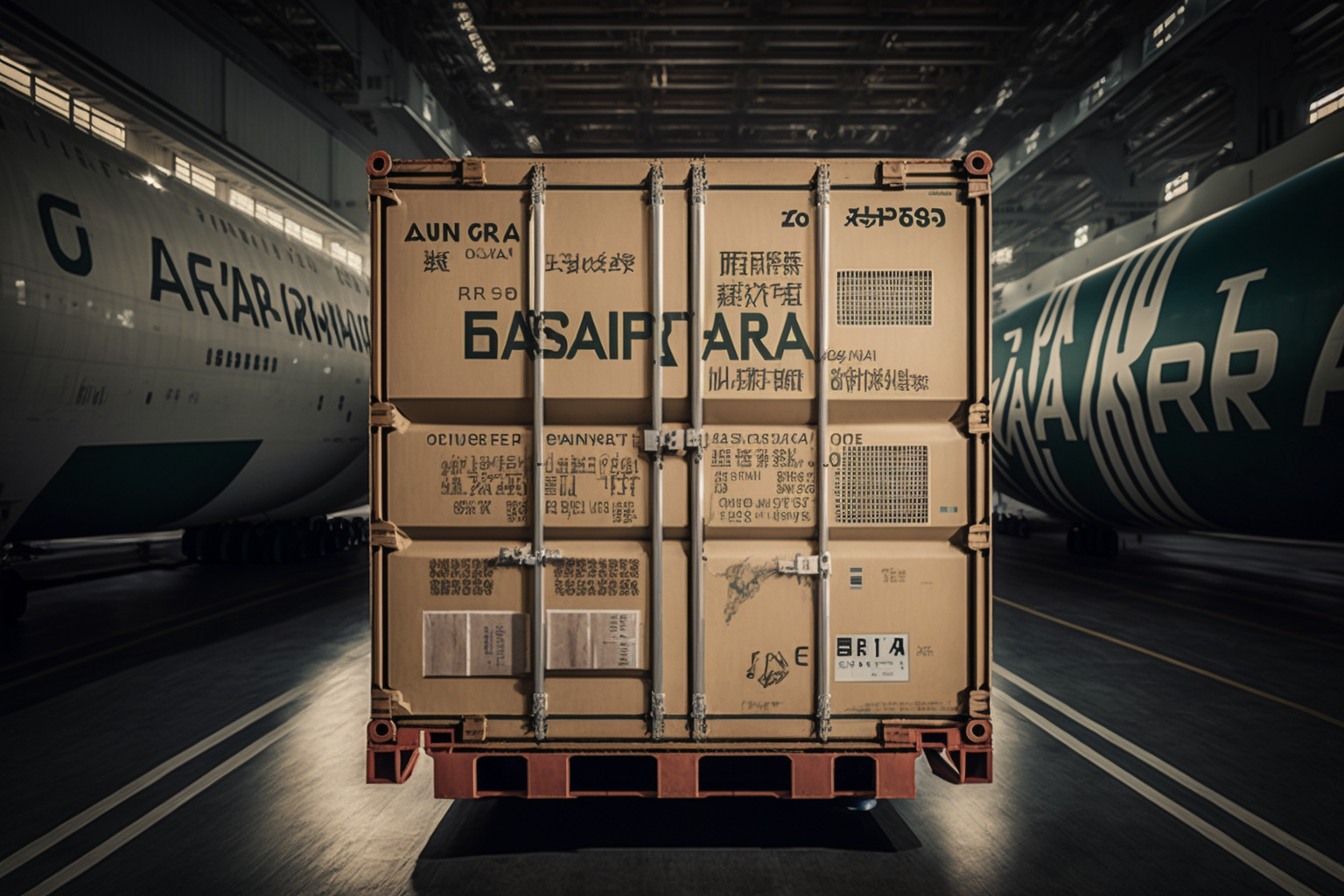The rapid growth in technology has brought with it a new era of global commerce. Now, countries around the world can easily transact with each other and share goods, services, and information. This is especially true of the China-USA relationship, which has become one of the primary trading partners in the world. To capitalize on this relationship, many companies have begun to explore the benefits of tech-driven delivery logistics. In this article, we’ll discuss some of the ways that technology is transforming the delivery process between China and the United States. We’ll also discuss the potential advantages and drawbacks of this new process. Finally, we’ll look at some of the ways that companies are using technology to speed up the delivery process and reduce costs.
Maximizing Efficiency With Tech-Driven Delivery Logistics
The world of delivery logistics has seen a dramatic shift in recent years as technology begins to play a larger role in the process. As the distance between China and the United States grows shorter and shorter, more businesses are taking advantage of tech-driven delivery logistics to streamline their operations and maximize efficiency.
The use of tech-driven delivery logistics has become increasingly popular as businesses look for ways to meet their customers’ demands in an increasingly globalized world. By utilizing tech-driven delivery solutions, businesses can reduce the time it takes to get goods from point A to point B, as well as reduce the cost associated with the delivery process.
- One of the biggest benefits of tech-driven delivery logistics between China and the United States is the ability to track and monitor shipments. This can provide businesses with invaluable insights into their delivery operations, as well as give them the ability to respond quickly and effectively to any potential issues with their shipments.
- In addition to tracking and monitoring shipments, tech-driven delivery logistics solutions can also help businesses save money by reducing their need to hire additional staff. Many tech-driven delivery solutions are automated, meaning that businesses can rely on the technology to take care of the logistics-related tasks, freeing up their personnel to focus on more important tasks. This can result in significant cost savings over time.
- Tech-driven delivery solutions can also provide businesses with valuable insights into their customer base. By tracking and analyzing customer data, businesses can gain insights into their customer’s behaviors and preferences, allowing them to customize their services to better meet their customers’ needs.
Overall, tech-driven delivery logistics between China and the United States can provide businesses with a number of benefits, including improved tracking and monitoring of shipments, cost savings due to automation, and better customer insights. All of these benefits can help businesses better meet their customer’s demands and maximize their efficiency in the process.
Improved Delivery Experiences for Customers
Today’s customers expect more than ever when it comes to their delivery experiences. Faster delivery times, better customer service, and more convenient options are all important factors in providing customers with a positive delivery experience. Companies that are able to meet these expectations can create long-lasting relationships with their customers and build a positive reputation in the industry.
- The first step in creating better delivery experiences is getting the basics right. This means making sure packages are shipped on time, with accurate tracking information, as outlined in the U.S. Postal Service’s Delivery Performance and Quality Metrics. It also means providing customers with clear and easy-to-understand instructions on how to receive their packages, as suggested by the Federal Trade Commission’s Consumer Protection Agency.
- Customer service is also essential for creating great delivery experiences. Companies should provide their customers with multiple ways to contact them, including email, phone, and social media. This allows customers to get their questions answered quickly and helps to build a sense of trust and satisfaction. Companies should also consider offering additional services such as package delivery notifications and package tracking.
- Finally, companies should look for ways to make the delivery process simpler and more convenient. This could include providing customers with options such as same-day or next-day delivery, as well as providing customers with the ability to pick-up their packages at a local store or even their home. Companies should also look for ways to streamline the payment process, such as offering customers the ability to pay with their credit card or digital wallet.
By taking the time to understand customer needs and expectations and ensuring that the delivery process is as simple and convenient as possible, companies can create better delivery experiences for their customers. This will not only result in happier customers, but can also lead to improved customer loyalty and higher sales.
Enhancing Cross-Border Logistics Partnerships
The logistics of international trade between China and the United States has become increasingly complex due to the sheer volume of goods that must cross the Pacific Ocean. To ensure smooth and efficient delivery of goods, both countries have developed partnerships with logistics companies to provide efficient and secure delivery services.
In recent years, cross-border delivery between China and the United States has become simpler thanks to the increased use of technology, improved infrastructure, and the development of more efficient logistics partnerships. These partnerships allow businesses to benefit from quick and reliable cross-border delivery, helping to improve their bottom lines.
The emergence of China-US logistics partnerships has made it easier for companies to send goods from one country to another. These partnerships involve the coordination of various logistics companies and the establishment of a framework for delivery services. The key to successful partnerships is the ability to provide reliable and cost-effective services.
To ensure smooth and secure delivery, logistics partnerships must be carefully managed. Companies must ensure that the logistics partners they choose have the necessary infrastructure and resources to facilitate a successful transaction. Additionally, companies must be aware of the local regulations and customs procedures that may affect the delivery process.
In addition to the development of partnerships, technology has also been a key factor in improving China-US delivery logistics. Many companies now use tracking systems to monitor the status of shipments, while others have implemented automated systems that streamline the delivery process.
Overall, the development of partnerships and the use of technology has greatly improved the efficiency and reliability of cross-border delivery between China and the United States. With more efficient delivery of goods, businesses can benefit from improved customer satisfaction and increased profitability. As the China-US delivery logistics partnership continues to develop, companies can look forward to even greater efficiency and cost savings.
Challenges of Implementing Tech-Driven China-USA Delivery Logistics
The delivery of goods between China and the United States has long been a complicated endeavor. With the advent of new technology, however, the process of shipping items from one country to another has become increasingly streamlined. Despite this, there are still many challenges that come with implementing tech-driven China-USA delivery logistics.
- One of the biggest challenges of implementing tech-driven delivery logistics between China and the United States is the need for a secure and reliable cross-border data exchange. In order for the logistics process to be efficient, data must be shared securely between the two countries. This requires companies to have access to the latest encryption technologies and security protocols to ensure the safety and privacy of sensitive data.
- Another challenge is the sheer amount of paperwork and paperwork processing that accompanies international shipping. In order to ensure that goods arrive safely and quickly, all paperwork must be handled quickly and accurately. This includes customs documents, trade invoices, and other necessary paperwork. Technology can help to reduce the amount of time spent on paperwork, but it cannot completely eliminate the need for manual processing.
- Finally, there is the issue of transparency when it comes to the delivery of goods. Technology can help to improve visibility and tracking of shipments, but there is still a need for an open and transparent system that allows customers to track the progress of their shipments and receive updates when necessary. Without such a system, it can be difficult to ensure that goods arrive in a timely manner and without damage.
The implementation of tech-driven delivery logistics between China and the United States is a complex endeavor. While technology can help to streamline the process, there are still many challenges that need to be addressed in order to ensure the safety, reliability, and transparency of the delivery process. Companies must invest in the latest encryption technologies and security protocols, and must also ensure that the required paperwork is processed quickly and accurately. Also, we recommend reading our article, where we talked about the advantages of logistics solutions for the delivery of goods from China to the USA.
FAQ
Technology is transforming the delivery process between China and the United States by providing greater accuracy and faster delivery times, improving customer service, reducing transportation costs, and streamlining the process through automated systems.
Technology can help reduce the cost of delivery by optimizing the supply chain, utilizing data and analytics to determine the most cost-effective delivery methods, and utilizing digital mapping and routing to reduce fuel costs and improve environmental sustainability.
Enhancing cross-border logistics partnerships can help businesses reduce costs, increase efficiencies, and open up new markets. Additionally, businesses can use technology such as artificial intelligence and the internet of things to make the process of cross-border logistics more efficient.

